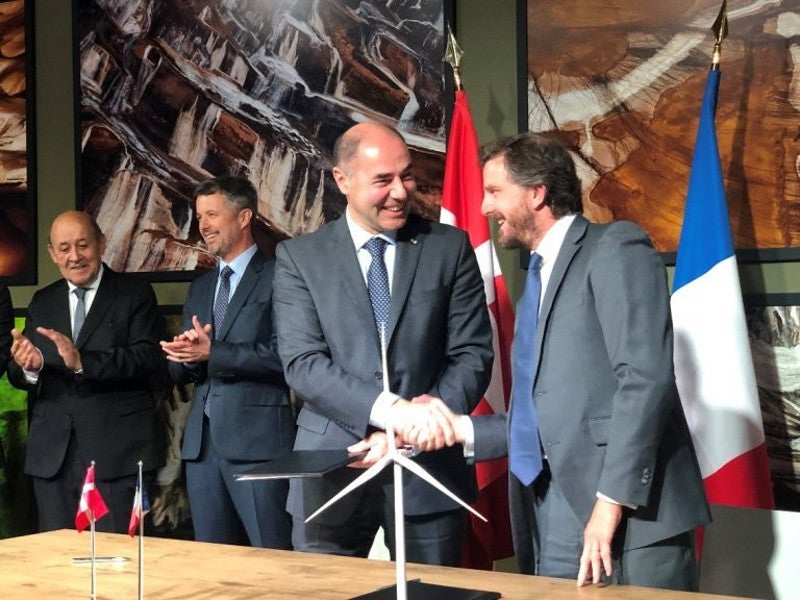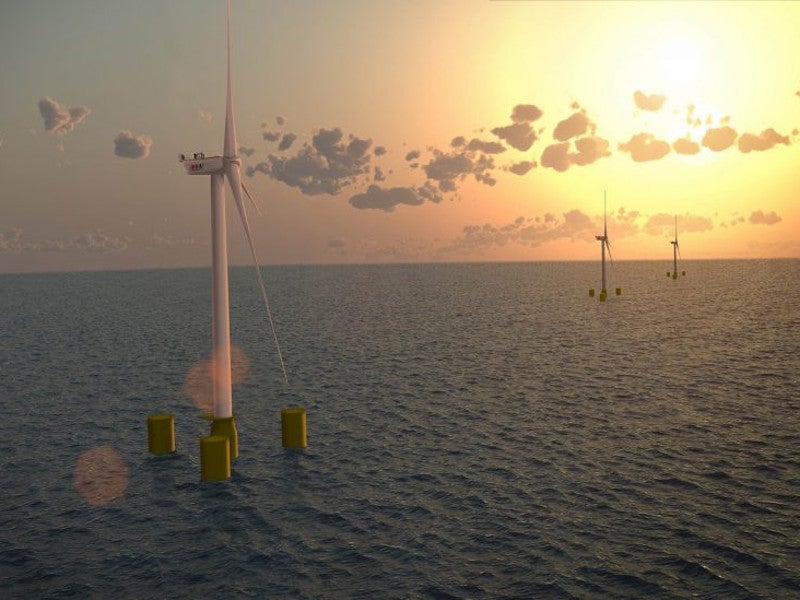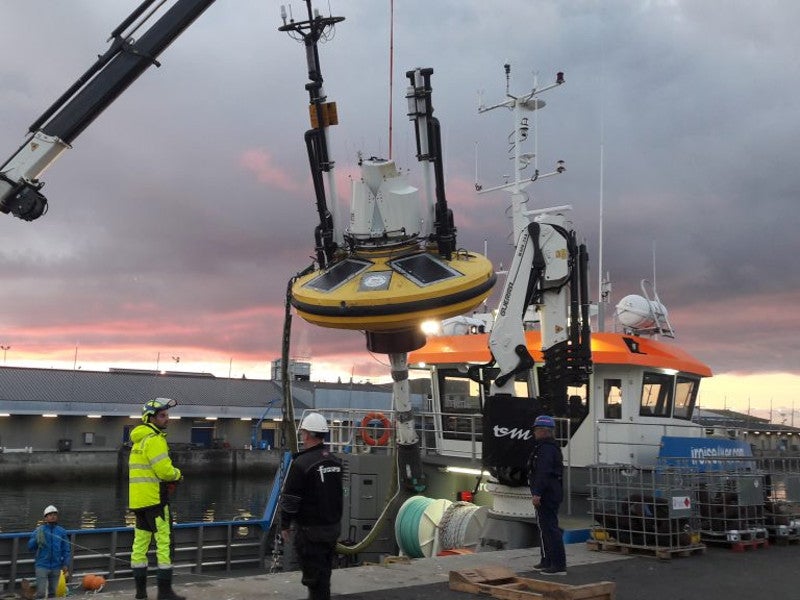Groix & Belle-Ile floating pilot offshore wind farm is being developed off the coast of Brittany, France. Operated by ADEME, the wind farm will have an installed capacity of 28.5MW.
Ferme Eolienne Flottante of Groix & Belle-Île (FEFGBI), a consortium consisting of EOLFI, CGN Europe Energy and la Banque des Territoires, is developing the project.
The Groix & Belle-Île wind farm will be the first oceanic offshore floating wind project in France. The renewable marine energy project forms a part of the Brittany energy policy.
Construction of the €230m ($254.1m) project will start in 2020, while commissioning is expected to be completed in 2022. The floating wind farm will supply power to 20,000 households on the Atlantic Coast and will have a service life of 20 years.
Groix & Belle-Ile floating wind farm location and background details
The wind farm is located in close proximity to the port of Lorient and Kerhellegant substation, which will support maintenance and electricity transmission respectively.
In April 2018, FEFGBI, the Committees of Fisheries and RTE, signed a tripartite agreement to continue their partnership for the development of the pilot wind farm.
FEFGBI conducted the first geotechnical survey for the project in 2017. EOLFI positioned a light detection and ranging (LIDAR) buoy at the project site in September 2017. The buoy collects and analyses data, including wind speed and direction, as well as the direction of waves and currents.
FEFGBI and ADEME signed financing agreements to frame conditions for the state support to the pilot project in October 2019.
The project is backed by future investments of ADEME under Demonstrators for Ecological and Energy Transition scheme.
Groix & Belle-Ile floating wind farm details
Groix & Belle-Ile floating offshore wind farm will feature three MHI Vestas V164-9.5MW wind turbines, which will be installed on floaters in a water depth between 55m and 70m. Each turbine will have a rotor diameter of 164m and a swept area of 21,124m².
The wind turbine floater will feature four cylindrical steel columns to stabilise the structure. The overall height and width of the floater will be 35m and 85m respectively.
The floater will also feature anchoring systems and underwater cables to connect it to the wind turbines. Five anchor lines will enable the floater to be moored to the seabed and prevent it from drifting.
Transmission and grid connection
The floating wind farm will be linked to the public electricity transmission network through subsea and underground connections.
The electricity generated by the turbines will be supplied to the grid at the Kerhellegant substation in Plouharnel. The landing point for the underwater connection will be situated at the Kerhillio area in Erdeven, which will be 4km away from the Kerhellegant substation.
The connection point between the subsea and underground cables will be near the beach’s car park. The 4.5km-long underground connection will run along existing roads to the Kerhellegant substation.
The underwater connection will include a single tri-cable submarine cable, which will be built along its 28km-long corridor area. The underground connection will originate from the landing manhole and will feature three separate cables in a casing, which is buried at a depth of 1.5m.
Contractors involved
MHI Vestas received a contract to supply three V164-9.5MW wind turbines for the project in October 2019.
Naval Energies, a leading marine renewable energy services provider, is the main contractor for developing the wind turbine floater for the project. Green Giraffe, a specialist advisory and project finance services firm, offered advisory services to EOLFI for the contractual structures of the wind farm.






